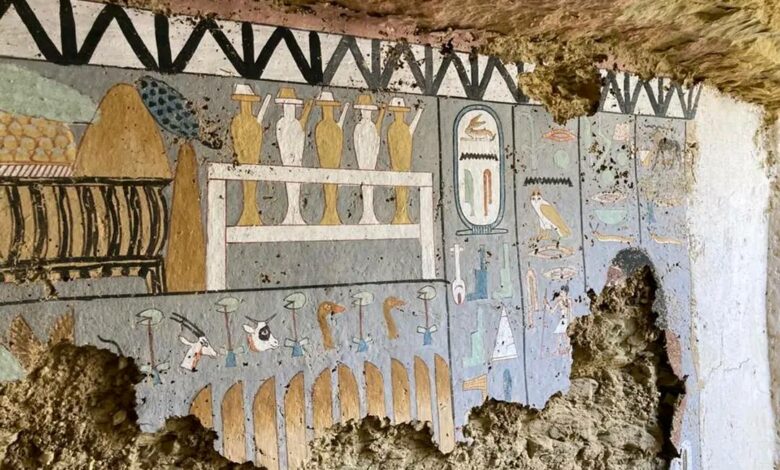
An Egyptian archaeological mission succeeded in finding several ancient tombs in the Saqqara necropolis, in Giza dating back to the era of the Old Kingdom, which extends between the years 2686 and 2181 BC.
Renowned Egyptologist Zahi Hawass announced during a press conference on Thursday, that “The excavations of the joint Egyptian mission with the Supreme Council of Antiquities in the area of Gisr el-Mudir in the Saqqara necropolis resulted in several archaeological discoveries dating back to the era of the Fifth and Sixth Dynasties in the Old Kingdom.”
The most important of the discovered tombs is that of Khnum-djed-ef, an inspector of employees, supervisor of nobles, and priest of the hierarchical group of King Unas, the last king of the Fifth Dynasty, Hawass said, adding that “the tomb is colored and contains drawings from everyday life”.
The second tomb belongs to a person called Meri, who bore many titles such as the keeper of the king’s secrets, and the assistant commander of the great palace.
The third tomb belongs to a priest of the hierarchical group of King Pepi I, and was found with nine statues made of colored limestone representing a man with his wife, as well as statues of servants and others single.
Hawass noted that several months after this discovery, a dummy door was found next to the site of the statues indicating that they belong to a person called “Messi” dating back to the era of the Fifth Dynasty.
A statue of a person in a standing position was also found with his wife holding his foot, and on the other side is his daughter carrying a goose.
The mission also found a shaft at a depth of 15 meters, at the bottom of which was a room containing a coffin made of limestone for a person called “Heka-shepes”, surrounded by many stone vessels.
“This sarcophagus has not been touched and has been closed for about 4,300 years,” Hawass said, explaining that “When opening the lid of the sarcophagus, we found a mummy of a man covered in gold leaf, and this is considered the most complete and oldest non-royal mummy found so far.”
A shaft about 10 meters deep was found, inside it was a group of wooden statues, and three stone statues, embodying a person called “Fetek” who worked as a judge and clerk, and next to it was an offering table, and in front of it was a coffin with his mummy inside.
The Secretary General of the Supreme Council of Antiquities Mostafa Waziri said that the mission also found many amulets, cosmetics, statues for different deities, as well as pottery vessels.




